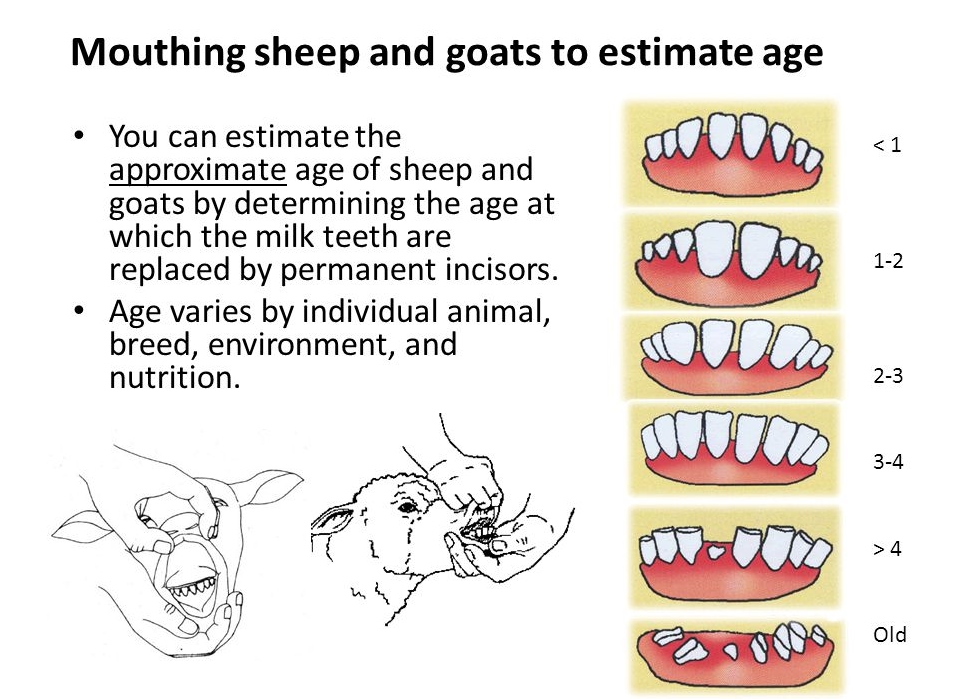The teeth can be used as an aid in determining the approximate age of a sheep, especially up to the age of four.
Sheep, goats and cattle all have front teeth on the lower jaw and a dental pad on the upper jaw. They also have molars for grinding their food. These molars are located on both upper and lower jaws in the back of the mouth.
Sheep have eight incisors (cutting or biting teeth) on the lower front jaw. These are sharp and small in animals less than one year. They meet a hard pad (dental pad) in the upper jaw.
At about 1-11/2 year, the centre teeth will drop out and they are replaced by two permanent teeth.
At about the age of two, two or more large front teeth appear, one on each side of the yearling teeth.
The three or four year old has six permanent teeth, two more than the two year old.
At four or five years of age, the animals have a complete set of eight permanent teeth in front. The sheep is referred to as “full mouth”.
After this point, the age is judged by the amount of wear on the front teeth.
Twenty-four molars (chewing or grinding teeth) are found in the back, six on each side of the upper and lower jaws.
As the animal ages, the teeth spread and drop out. Once teeth are lost or broken, the sheep is referred to as “‘broken-mouthed”. It becomes difficult for her to eat properly, so care should be taken to make sure she eats sufficient amounts of food.
Checking the molar teeth:
Never put your fingers inside the animal’s mouth to check the molar teeth – you will get badly bitten, and there is a considerable power in the jaws.
First check some young adult sheep or goats, so that you know what a normal jaw should feel like. Only by practicing on normal young individuals, and then comparing with older animals, will it be possible to become adept at recognising the abnormalities.
Feel the thickness and sharpness of the jaw bones all the way along to the angle of the jaw. Normal healthy jaw bones are slim with well-defined edges. There should be no pain, no thickenings or swellings, and the two sides should be symmetrical.
In animals with molar tooth disease, the jaw bones are thickened and have rounded edges. There may also be more thickening on one side than the other.
Feel the teeth through the cheeks. There should be no pain, and no displacement or movement of the molar teeth. Sometimes it is easy to feel that the teeth are longer than normal, displaced and pushing the cheeks out, or gaps where there are teeth missing.
If you suspect that the teeth are not healthy, smell the animal’s breath. If there is food debris trapped on or around unhealthy teeth, this may smell bad.

